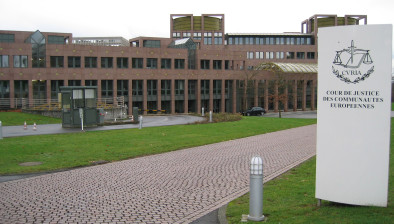ECJ: Ruling clarifies obligations of competent authorities where observations by third parties raise doubt as to environmental impact

The European Court of Justice (ECJ) has answered questions posed by the Irish High Court as the interpretation of Article 4(4)–(6) of Directive 2011/92 and the obligations arising where information received from third parties during the planning process raises doubt as to the potential environmental impact of a project.

About this case:
- Citation:Case C‑41/24, EU:C:2025:140
- Judgment:
- Court:European Court of Justice
Delivering judgment on 6 March 2025, the ECJ confirmed that information from third parties sufficient to oblige a competent authority to require additional information from a developer must meet two conditions: the observations must relate to potential ‘significant’ environmental effects of a project, and they must be of such a nature as to preclude the conclusion that there can be no reasonable scientific doubt as to the possibility of the project having significant effects on the environment.
Background
The dispute in the substantive proceedings concerned a proposed strategic housing development involving the construction of 123 apartments at Ballincollig, Co Cork.
An arboricultural study and two screening reports were prepared on behalf of the notice party developer — an environmental impact assessment (EIA) under Directive 2011/92 and an assessment for the purposes of Directive 92/42 (the Habitats Directive).
The first report did not analyse flora and fauna and did not refer to the impact of the project on bats, and the second report made only a general reference to the fact that disturbance to fauna could arise directly through the loss of habitat or indirectly through noise, vibration and construction activity. The tree study identified 13 trees for removal, without taking into consideration the potential or actual use of the trees by bats or whether the site was used for foraging or commuting.
The applicant in the substantive proceedings, Waltham Abbey Residents Association, submitted observations to An Bord Pleanála in July 2020 that the proposed development was near a wildlife corridor on the River Lee, and that there were visual sightings and records of a diverse range of bat species in that area.
Permission was granted by An Bord Pleanála in September 2020 without any requirement for an EIA and without collecting further information concerning the bats, being satisfied that the developer’s EIA report identified and described adequately the effects of the proposed development on the environment.
The resident’s association issued proceedings against that decision. The High Court was uncertain as to the assessment obligations arising from Directive 2011/92, particularly where a third party provides the competent authority with information which objectively raises doubts as to the effect of a project on the environment.
The High Court asked the ECJ whether Article 4(4)–(6) of Directive 2011/92 must be interpreted as meaning that, where, in the context of a screening procedure carried out under that provision, a third party has provided the competent authority with information which objectively raises doubts in relation to potentially significant effects of a project on the environment and species protected by the Habitats Directive, the developer or the competent authority must itself obtain all relevant information to dispel any doubt in relation to those effects, and must decide that an EIA is necessary if such doubt cannot be ruled out.
The European Court of Justice
The ECJ set out the relevant legislative framework, noting that Article 2(1) of Directive 2011/92 requires that projects likely to have significant effects on the environment, for the purpose of Article 4 thereof, and read in conjunction with Annexes I or II thereto, must be subject to an EIA before consent is granted.
The ECJ considered that as per Article 4, Annex I projects require assessment as they present a risk of significant environmental effects, but that Member States could determine whether to assess Annex II projects on a case by case examination and/or through the application of thresholds and/or criteria set by them.
The court also highlighted Article 4(3), which states that Member States can set thresholds or criteria to determine when projects need not undergo either the determination under paragraphs 4 and 5 of that article or an EIA, and/or thresholds or criteria to determine when projects are in any event to be made subject to an EIA without undergoing that determination.
The court set out that where Member States decide to require such a determination, the relevant screening procedure is set out at paragraphs 4 and 5 of Article 4.
In this regard, the ECJ highlighted that the procedure requires the competent authority to make its determination on the basis of the information provided by the developer, and that Directive 2011/92 does not expressly lay down an obligation to consult the public during the screening procedure nor does it specify situations in which the competent authority should ask the developer for additional information or in which it should obtain that information itself.
The court found: “Consequently, Directive 2011/92 does not expressly lay down an obligation on the competent authority, after observations concerning possible significant effects of the project concerned on the environment have been submitted to it by a third party, to ask the developer for additional information or to obtain that information itself.”
However, having regard to case law and to the precautionary principle, the ECJ opined that “it follows from Article 2(1) of Directive 2011/92 that an EIA must be carried out when there is a probability or a risk that the project in question will have significant effects on the environment” and that “such a risk exists if it cannot be excluded on the basis of objective evidence that the project is likely to have significant effects on the environment”.
The court considered that it was thus necessary for the competent authority to take into account all the relevant information available to it, including information submitted to it spontaneously by a third party, where same contains objective evidence enabling it to assess whether there is a risk that the project will have significant effects on the environment.
The court also considered inter alia that where the competent authority cannot rule out on the basis of that information that a project will have significant environmental effects, it must enable the developer to provide it with additional information before deciding whether or not an EIA is necessary, however where the competent authority is able to rule out, on the basis of objective evidence, the possibility that a project is likely to have significant environmental effects, that authority may decide that an EIA is not necessary, without a requirement to ask the developer for additional information.
Recognising that the wording of Article 2(1) of Directive 2011/92 is similar to that of Article 6(3) of the Habitats Directive, the ECJ determined that the Article 6(3) requires that, in the event of doubt as to the absence of significant environmental effects, an assessment must be carried out and in the absence thereof, the competent authority authorising a plan or project likely to have a significant environmental effect on a protected site must state to the requisite standard the reasons why it was able, prior to the granting of such authorisation, to achieve certainty, notwithstanding any opinions to the contrary and any reasonable doubts expressed therein, that there was no reasonable scientific doubt as to the possibility that that project would significantly affect that site.
The ECJ concluded that two conditions were, therefore, required to be met in order for the competent authority to be obliged to ask a developer for additional information on the basis of observations of a third party: the observations must relate to potential ‘significant’ environmental effects of a project, and they must be of such a nature as to preclude the conclusion that there can be no reasonable scientific doubt as to the possibility of the project having significant effects on the environment.
Conclusion
The ECJ ruled that where a third party has provided the competent authority with objective evidence as to the potentially significant effects of a project on the environment or on a species protected by the Habitats Directive, the authority must ask the developer to provide it with additional information which must be taken into account prior to deciding whether an EIA is necessary, but that where the competent authority is able to rule out (with objective evidence) the possibility that the project is likely to significantly affect the environment, the authority may decide that an EIA is not necessary without requiring additional information.
Waltham Abbey Residents Association v. An Bord Pleanála & Ors, Case C‑41/24, EU:C:2025:140












